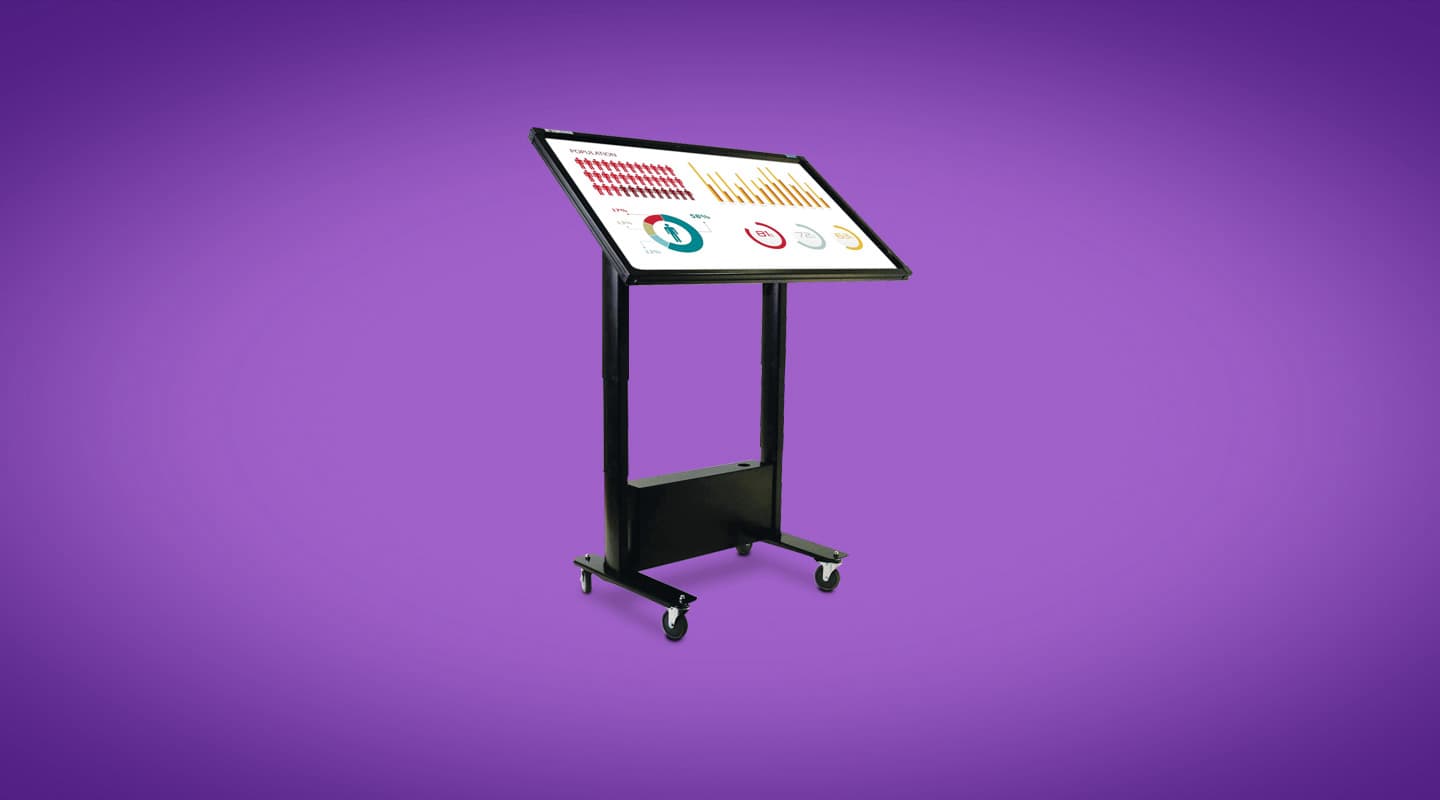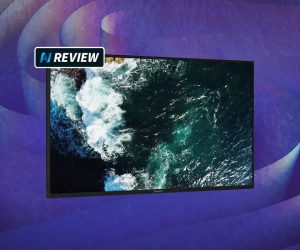
Review: Technology Core – HDI Mobi Elite Plus Trolley
Technology Core has taken the popular MoCoW (a term keyed by the folks at Queensland University of Technology meaning Mobile Computer on Wheels) and spruced it up with height and tilt adjustment mechanisms and a touch interactive LCD.
Review:/ Ben Hatcher
Technology Core has taken the popular MoCoW (a term keyed by the folks at Queensland University of Technology meaning Mobile Computer on Wheels) and spruced it up with height and tilt adjustment mechanisms and a touch interactive LCD. The results are worthy of a closer look.
MOBILITY & FLEXIBILITY
The the purposes of this review I’m testing the Mobi Elite Plus with a 55-inch touchscreen that has the ability to be height adjusted up to 1.71m (top of screen) and will also tilt to any angle (all the way to a flat ‘tabletop’) along that journey. The mechanics behind the up and down motion as well as the tilt mechanism are very smooth and the controls are well-positioned for both safety and usability. Although there is only the one button that switches between the height and tilt adjustment and up and down, arrow buttons take care of the execution. It’s very easy to work out how to operate. The trolley is built to a high standard and is robust. It is not overly-light, but with the feature set, this is understandable. However, it would probably be best for those of slight build to have someone help them move the unit around.
There is also a base model, the Mobi, that has manual height adjustment while the Mobi Elite model has powered height adjustment and tilts when the screen gets to the lowest position. There is also the option of having a larger 65-inch LCD screen.
For the purposes of testing, a Lenovo tiny M93P PC running the Windows 7 OS was connected up to the screen via USB. The setup was a simple plug and play affair. According to Technology Core the touch interaction will also work on Mac OS as well as Linux operating systems.
TOUCH INTERACTIVITY
Large LCD touchscreens are nothing new and a lot of the manufacturers are using an overlay to enable touch interaction. Technology Core has chosen to use an infrared (IR) technology to accommodate touch. A frame sits embedded just in front of the LCD panel and has light emitting diodes (LEDs) on one side and light detectors on the opposite side. This essentially creates an optical grid across the screen and when an object (finger, stylus etc) touches the screen it interrupts the light beam. This is how the unit detects the position of a touch. The main advantage is that the response is very accurate but the detection may be susceptible to interruption by other objects, even dust, and may also be confused by the presence of high-frequency flickering light sources such as fluorescents, metal halides and LEDs.
Overall the idea of eliminating the need for an overlay gives a certain amount of familiarity to the unit. A majority of people have touchscreen phones or tablets and the IR touchscreen coupled with the tilt feature gives the feel of a 55-inch iPad. I’ll talk more about this later.
SELLING POINT – A ‘SMARTBOARD’… LITERALLY
For as long as I can remember, around AV departments the topic of smartboards (think Panasonic’s Panaboard) constantly rears its head. The conversation with stakeholders usually goes something like this.
Stakeholder: We would like to get a smartboard.
AV professional: Can I ask why?
Stakeholder: Because we saw someone from another institution had one and we want one too.
This is obviously not a particularly convincing argument for purchasing a piece of technology. When we dig a little deeper the main reason clients want a smartboard is for use as a whiteboard so that they can brainstorm ideas and then print the scribing off to distribute. Recently our team at the University of Adelaide has had a surprising number of these requests come through and we are pointing them in the direction of the Mobi Elite Plus unit. Users can use the unit as a whiteboard using the WizTeach software as well as annotate over the top of Microsoft documents.

WIZTEACH : STRANGE NAME, GOOD PRODUCT
As technology professionals I think that we can sometimes get caught up in feature sets and ‘cool stuff’. It’s all well and good having a product that will allow you to annotate over a document; connect up to a video conference that allows participants to dial in from all over the world and do live annotations as well; have all the people in the room connect up with their tablets and embed photos into the presentation for further elaboration (I could go on); but in reality, most of the time the simplest solution is not only the best but the one that will actually get used.
A WizTeach license comes with the purchase of any of the trolley systems that Technology Core offers. It allows users to do a simple whiteboard session and save the scribing as a JPEG image. If you would like to annotate over the top of an MS Office document (Work, Excel, PowerPoint) you can do this as well. The good thing is that the annotations can be saved embedded as part of the document. There’s nothing worse than having to take a photo of all the scribbles on a doc with your phone and then emailing it to yourself to put back into a PowerPoint slide. While this product may actually be aimed at the K-12 education environment, its simplicity is a big attraction.
A MASSIVE WORKSTATION
As ridiculous as it may seem (see the US Fox network’s newsroom), these screens could potentially be used as a presentation device. We have looked at using an HDMI distribution amplifier to split the video and audio signal from the PC off to the local trolley touchscreen monitor with the second output going into an AV system for distribution. On testing, the results gave the presentation a certain wow factor but above this it actually felt rather intuitive. There is some work required to get everything looking neat and tidy sitting on the trolley system. We have Windows 7 installed on the Lenovo tiny PC due to some University standard operating environment issues, but I think there would be a great benefit in (dare I say it…) using Windows 8 [Wash your mouth out – Ed]. The tilt at any height feature makes the experience both comfortable and intuitive.
OVERALL IMPRESSIONS
Personally I am very impressed with the Mobi Elite Plus unit. It definitely caters for a majority of the requirements that our users have with regard to whiteboarding and annotation on documents. I was really surprised at the price point with the 55-inch unit coming in at just over AU$6000 and the 65-inch at just over AU$7000. When compared with a Panaboard or equivalent that comes in at around AU$2000–$2500 I think the extra money is more than justified.
Obviously you need to buy a PC to attach to the unit and a wireless keyboard with touchpad is also handy for initial log in. I think one thing that would greatly enhance the overall experience would be to have a slot-in PC similar to the NEC OPS. This would make the unit extremely slick. If your clients are considering a trolley system for collaboration, presentation and brainstorming Technology Core’s product line deserves your consideration.















RESPONSES